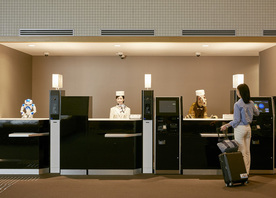Japan’s aquatic F1 - Kyōtei (boat racing) - is one of Japan’s lesser-known yet super exciting home-grown sports. Find out more in our guide.

Intro
Japan is a hugely exciting country to visit. It’s also a sporting nation that is as famous for its traditional sports such as sumo and martial arts as it is for its love of western sports like baseball and F1. Alongside the likes of sumo, Japan has a huge number of lesser-known, home-grown sports that are well worth a look for any sports lover visiting Japan, especially if you enjoy things that are a little different. Why? Well, as you may know, Japan has a weird and wonderful side that runs in parallel to its serenity and ancient traditions, and this extends to some of its sports. One of these is Kyōtei - a high-speed, water-based powerboat race that’s one of the few sports in Japan you can legally bet on. Want to find out more? Let’s hit the water and make some waves!

What is Kyōtei (boat racing)?
The word Kyōtei translates very literally as ‘boat race’. Kyōtei dates back to the early 1950s in Japan and describes a specific high-speed powerboat racing sport from Japan - an aquatic F1 - using a form of hydroplane craft. Each race involves six boats, each piloted by a single driver, and three laps around 600-metre to 1,800-metre courses, with spectators betting on the winner by buying tickets called funaken.
On race day, there can be up to 12 races in a single day. Unusually for a race, Kyōtei features a flying start rather than a standing start. This means that racers are already moving and have about 100 seconds to fight for the best position before the race officially starts. Racers also take part in a practice race before each race begins too, which can influence how the spectators might bet.
The Kyōtei season starts each January and lasts the full year, with an end of year grand prix, in December involving the sport’s top 18 races. Being a Kyōtei racer is big business in Japan and a good career if you’re successful. At the latest estimate, there were 1,583 professional racers in the sport, including men and women. The fact that men and women compete in equal terms makes the sport quite unique worldwide. Around 10% of racers are believed to be female and they often have a natural edge in speed due to being lighter.

Where can I watch Kyōtei (boat racing)?
Kōei kyōgi: Japan’s public sports
Kōei kyōgi are Japan’s four public sports. They include Kyōtei (boat racing), horse racing, bicycle racing, and asphalt speedway motorcycle racing. They are the only four sports you can legally gamble on in Japan. As a result, they are controlled and regulated by the government using special laws.
Bonus Recommendations
If you’re planning to watch Kyōtei (boat racing) in Japan, you might also be interested in the country’s other popular sports and activities. Here are our bonus recommendations.
- Start your engines! Although very different to Kyōtei (boat racing), Japan loves Formula One and the country has one of the sport’s most celebrated circuits - Suzuka. Read our guide to F1 Racing in Japan for more.
- Attending a Sumo match is a great way to experience one of Japan’s most traditional sports.
- Kendo brings to life Japan’s traditions and customs through a sport that follows in the footsteps of the samurai. Our guide on How To Experience Japanese Martial Art of Kendo will tell you everything you need to know.
- Ekiden is a unique long distance team running relay that is very popular in Japan and not widely known in the west. Read our Guide to the Incredible Sport of Ekiden to find out more.
- It may surprise you to discover that the Japanese love baseball. It’s seriously big in Japan and attending a baseball match in the Nippon Professional League is a great way to experience the passion of Japanese fans. Discover more in our Beginners Guide to Japanese Baseball.
- Japan offers some of the finest ski slopes and resorts in the world and has hosted the Winter Olympics several times as a result. If you love winter sports and want to know more, read our Starters Guide to Skiing and Snowboarding in Japan.
Photo credit: Casia Charlie @Pexels





